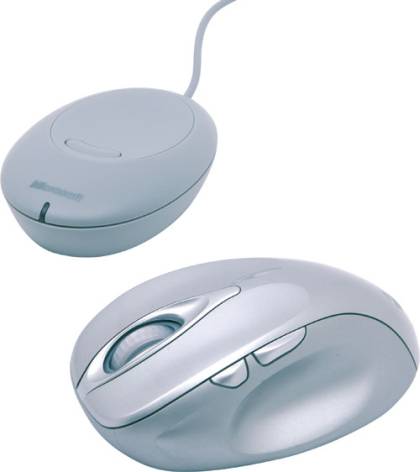The Ultimate Mouse Hunt Part Two
Microsoft Wireless Laser Mouse 6000
The name may suggest a similar model to the one we just discussed, minus the wire. But in fact it's very different - starting with the sensor, which is an in-house Microsoft development. Laser illumination is associated with an all-new processor the Redmond campus seems very proud of. They tout its microscopic etching, optimized energy consumption and unmatched power. What caught my attention in the presentation was the announcement of predictive capabilities. The processor anticipates coordinates in order to fill any gaps in reporting (due to too-rapid movement, surface imperfections, etc.) On paper it's an interesting idea for avoiding jerky movements. We don't know the physical size of the sensor, but it operates at 6,000 images per second for a maximum resolution of 1,000 dpi.
Comfort-Oriented
The shape of the mouse is inspired by the previous ergonomics efforts made by Microsoft. Its base is very wide; the upper part is tilted to the right and curved. On each side is a cutaway to make grasping easier. For right-handers, comfort is truly optimal, but the hand position is passive. Your hand rests on the mouse and moves over the desktop with it. To me, this is not the best position for speed and reactivity in games or for photo retouching. I prefer a more active hand position. But having said that, it's really a matter of personal preference. Also, the 5.5-oz. (155 grams) weight is significant and will be a little to heavy for the majority of gamers.
Get Tom's Hardware's best news and in-depth reviews, straight to your inbox.
Current page: Microsoft Wireless Laser Mouse 6000
Prev Page But Who's It Really For? Next Page We Want Clicks
